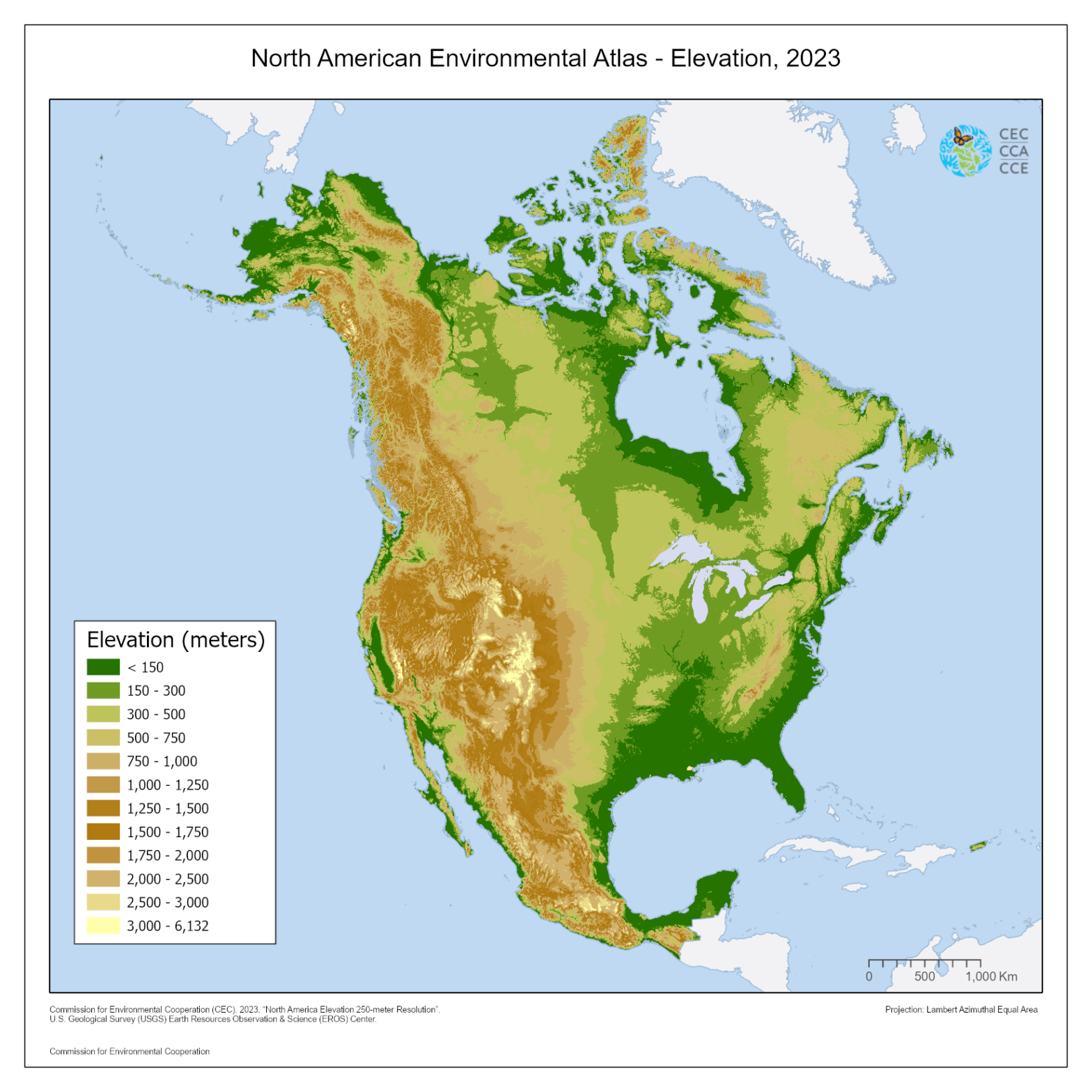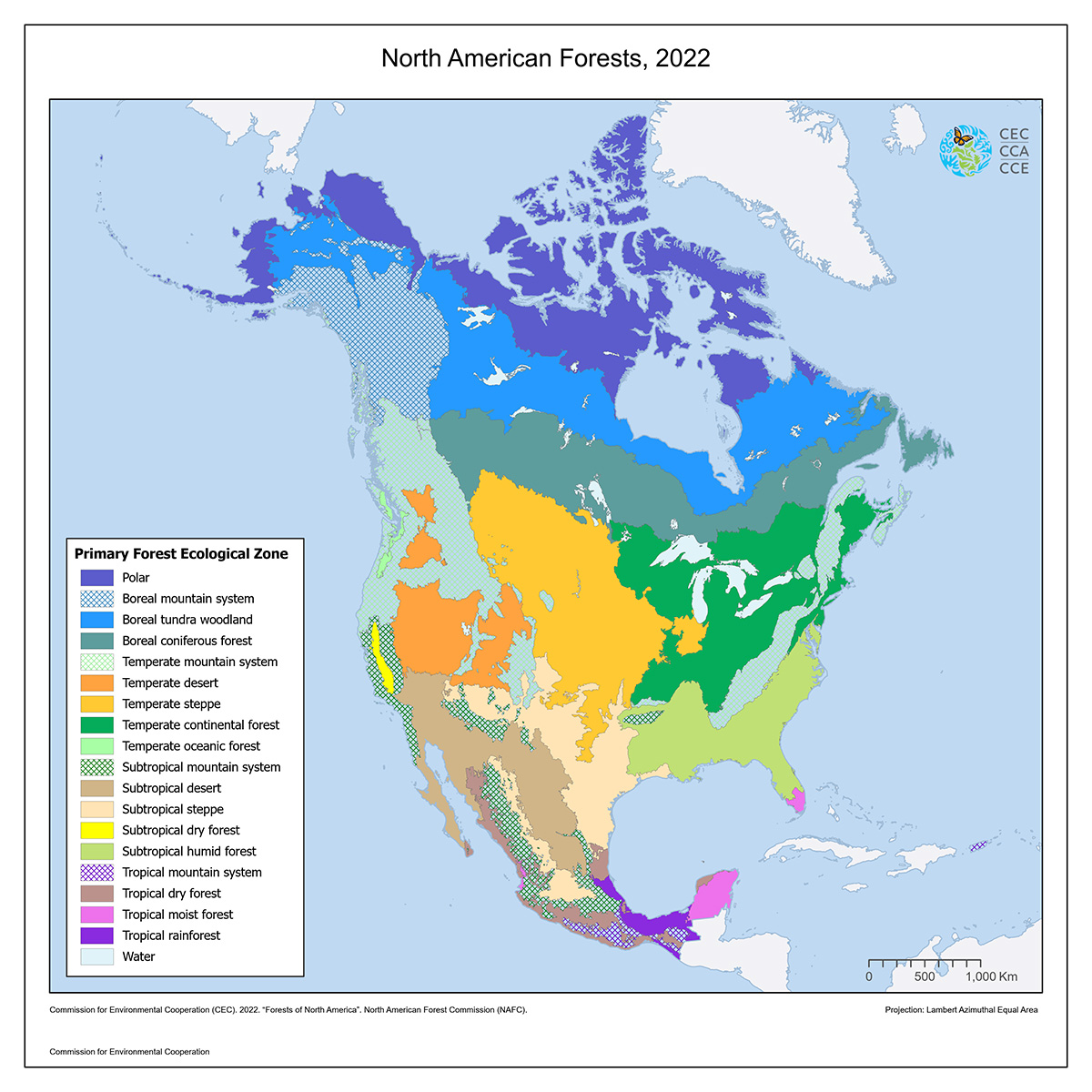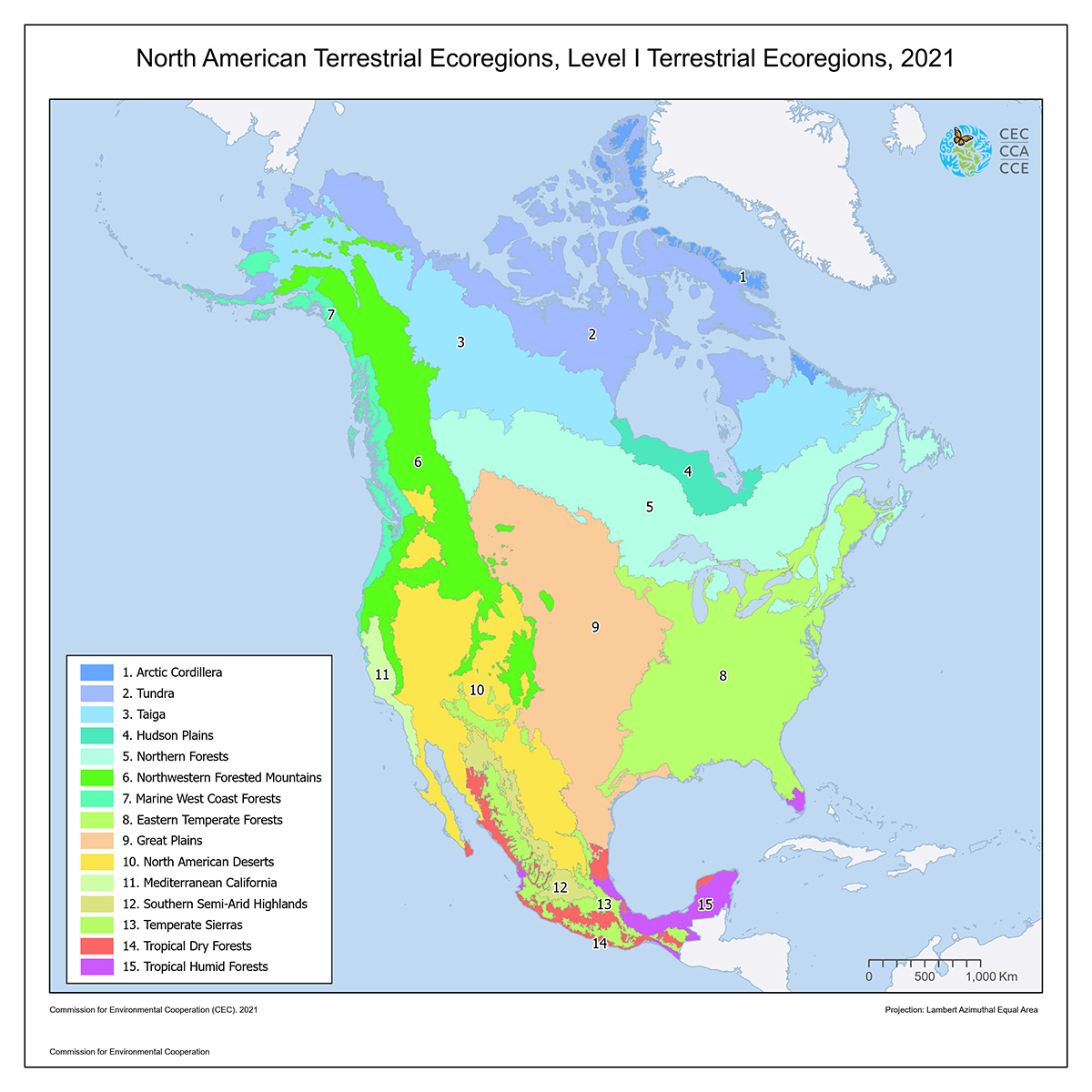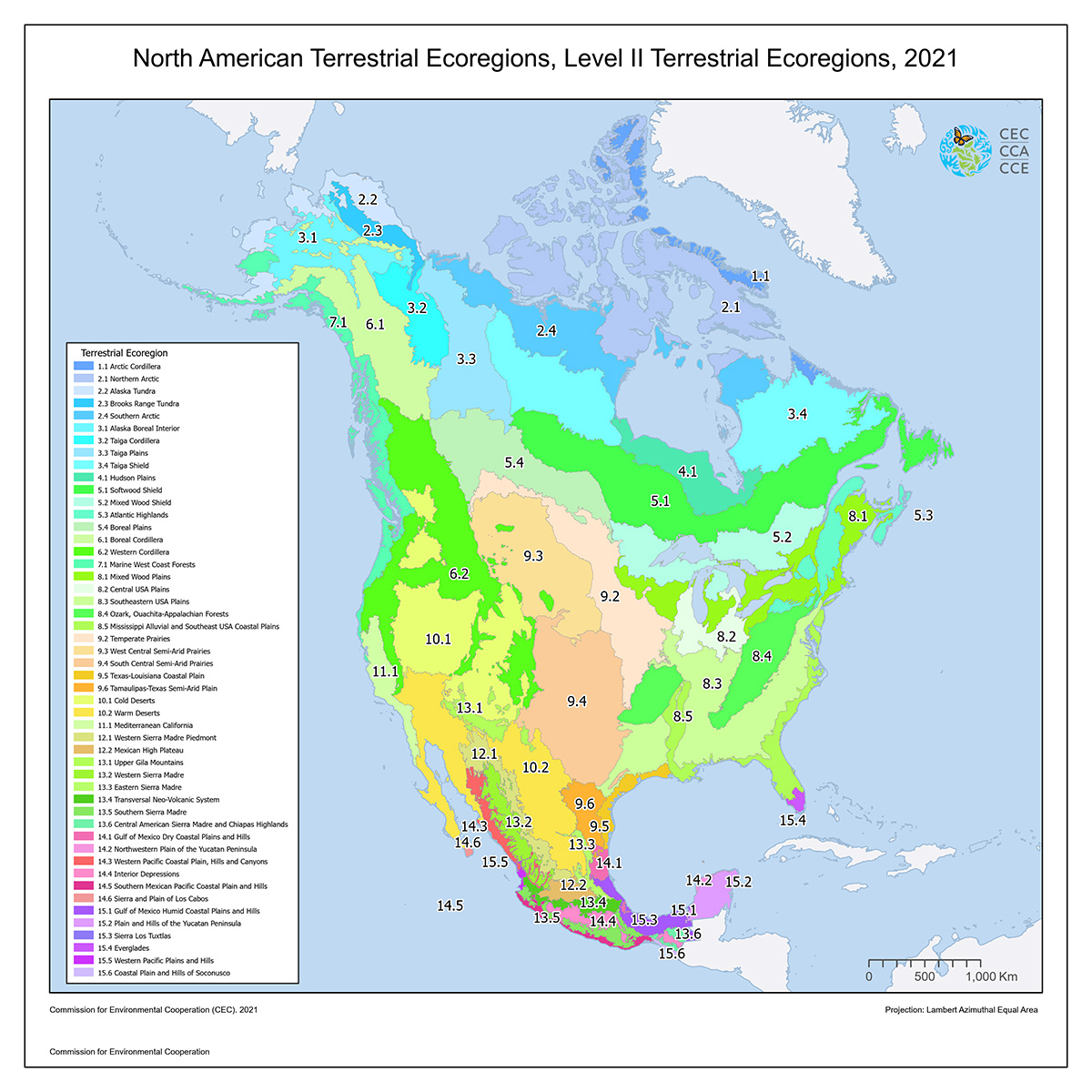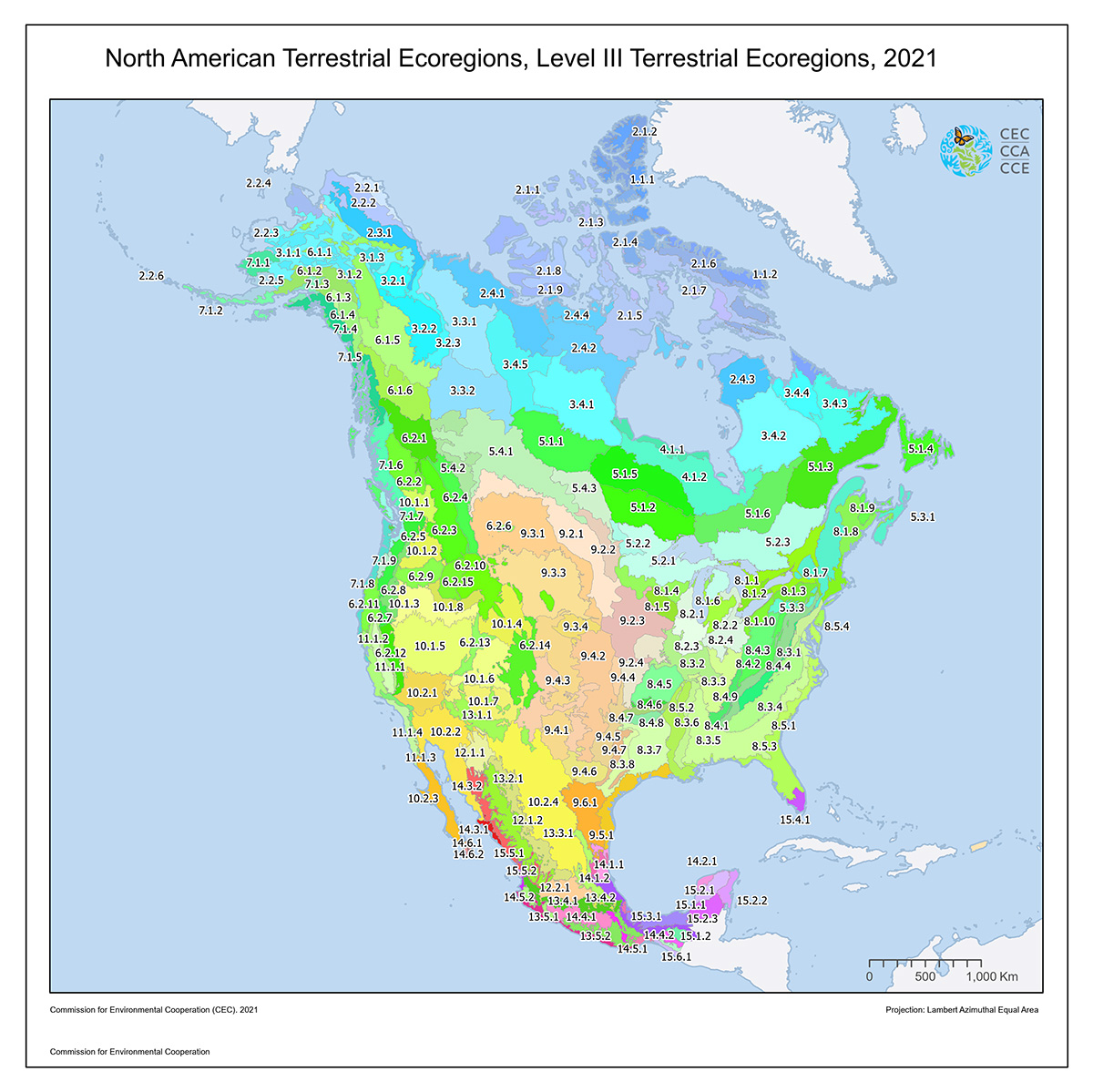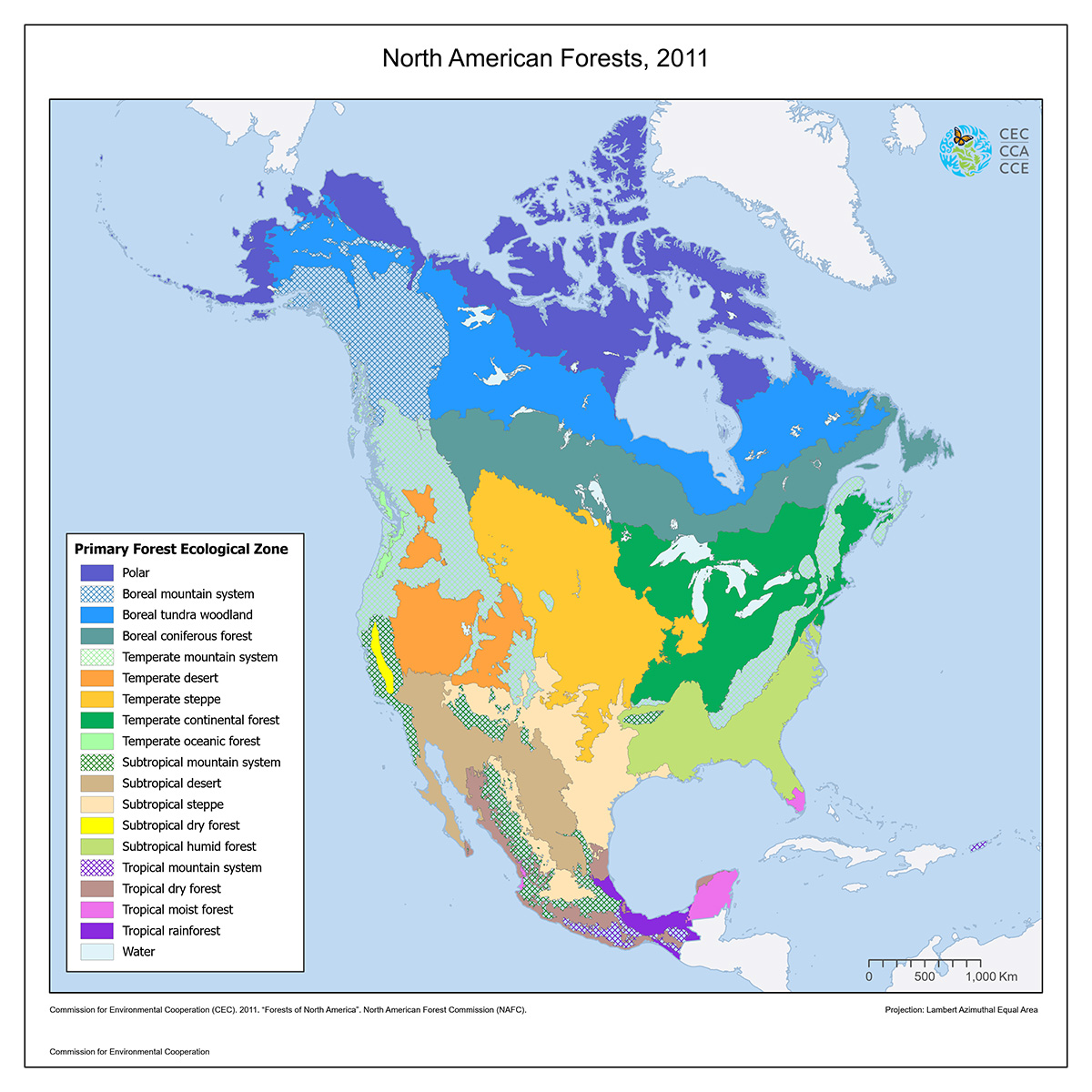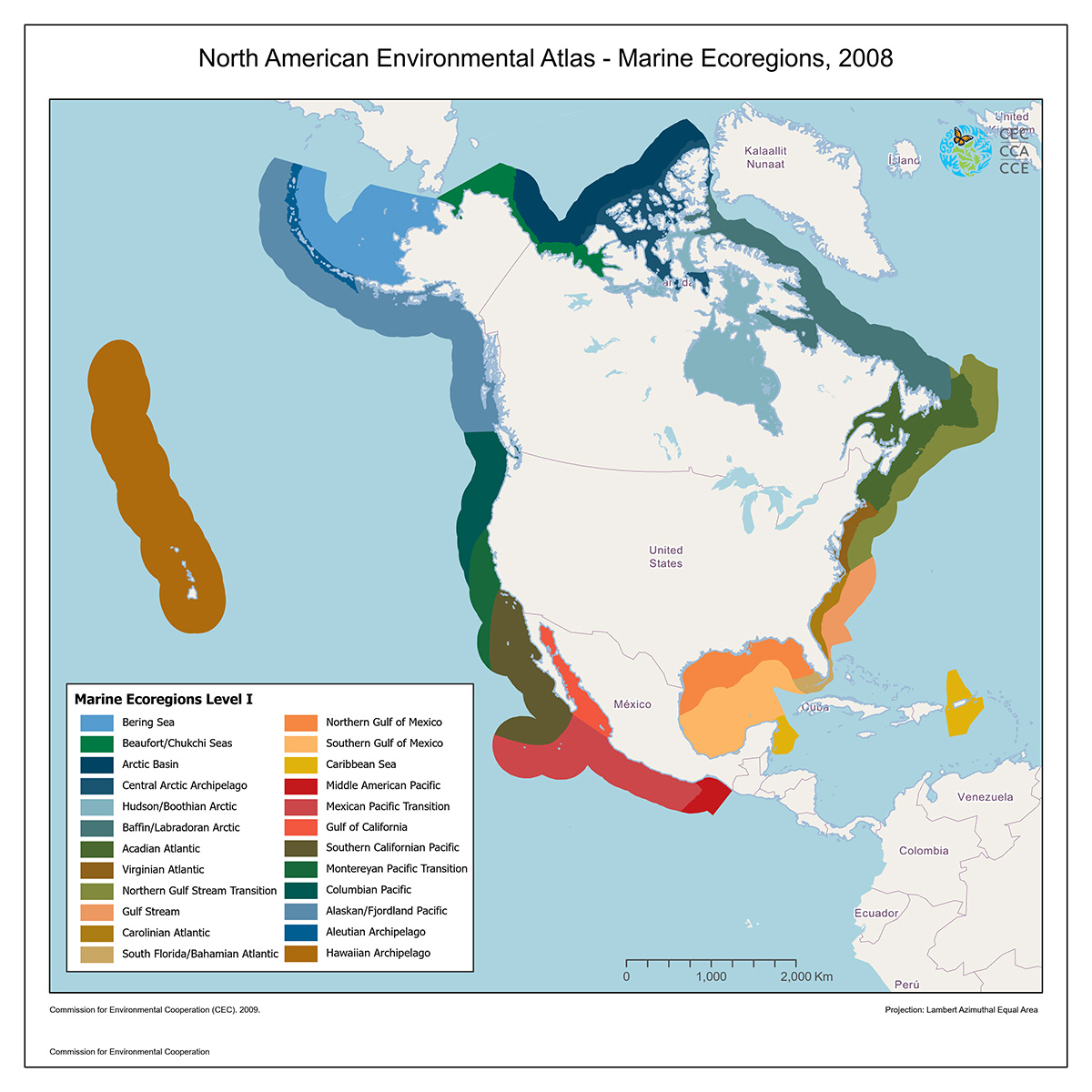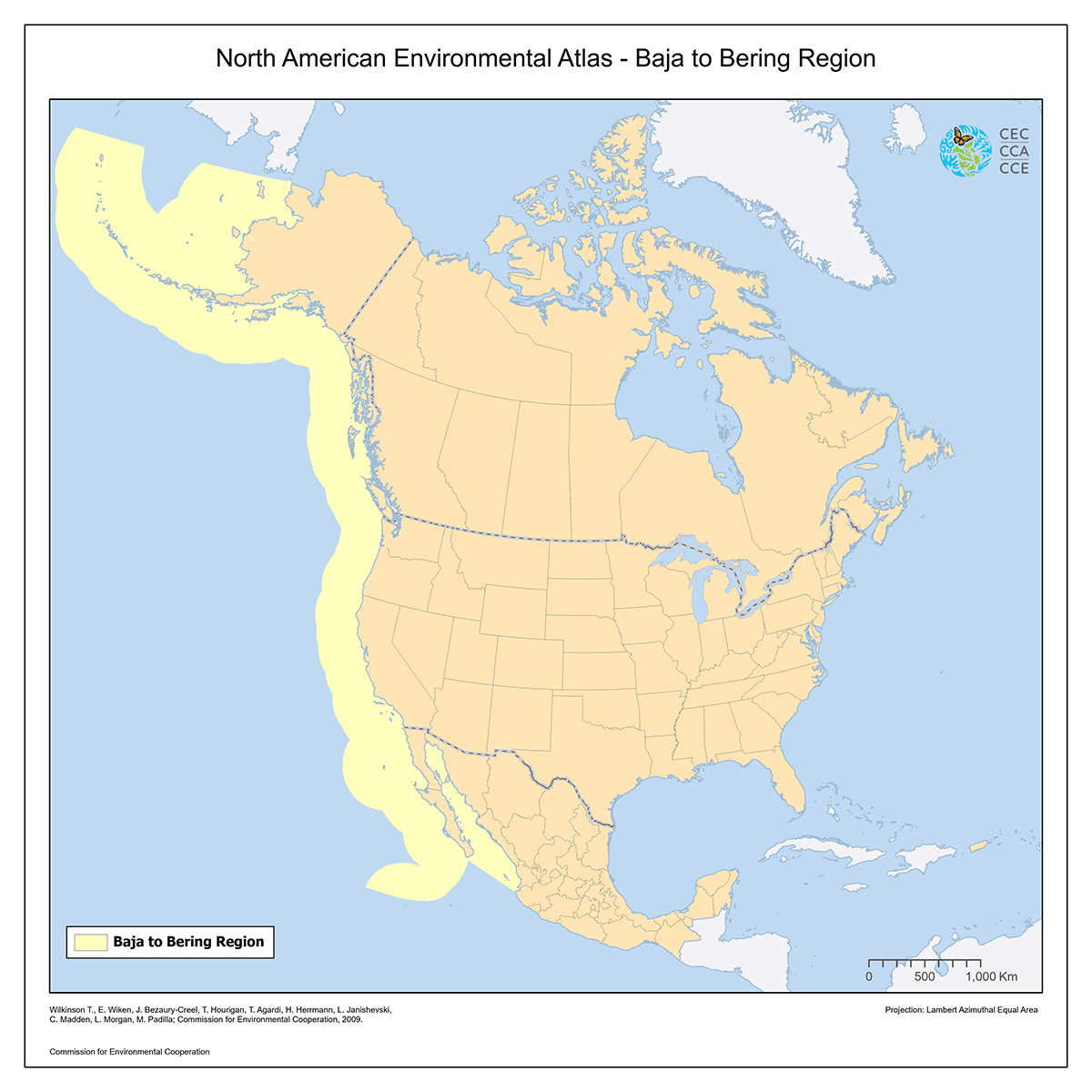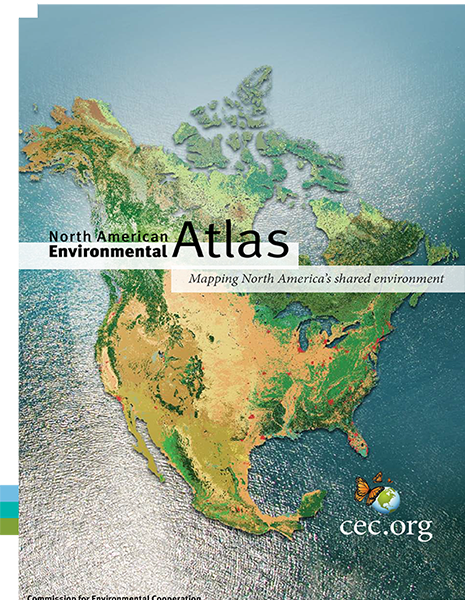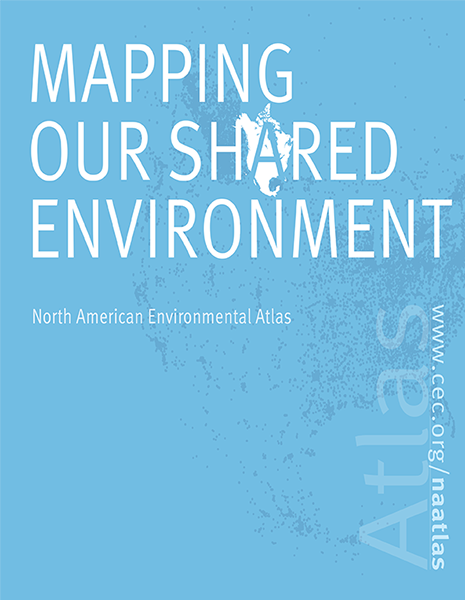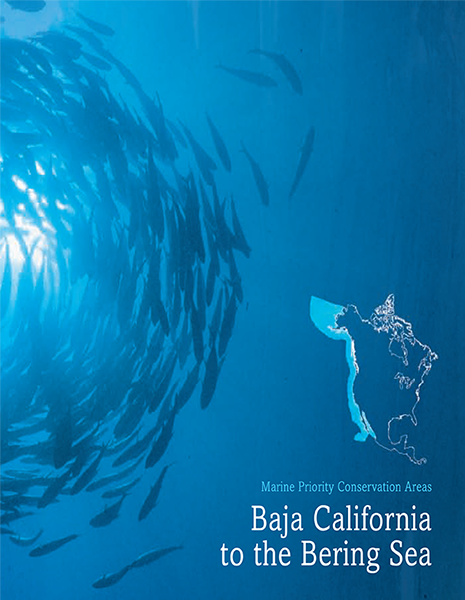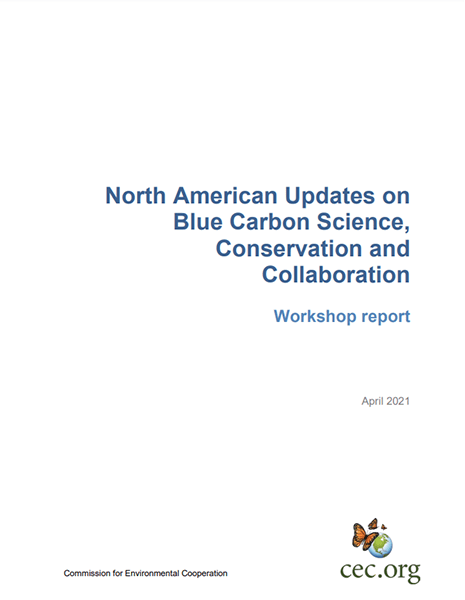Mapping Our Shared Environment
The North American Environmental Atlas combines and harmonizes geospatial data from Canada, Mexico and the United States to allow for a continental and regional perspective on environmental issues that cross boundaries. It is a unique tool to analyze and raise awareness of our shared environment and ecosystems across the continent, to demonstrate their value, and to help us see what needs to be done to protect them.
The dozens of map layers of the Atlas are unique in that they harmonize geographic information across North America’s political boundaries. By comparing these map layers, we can better understand and quantify critical trends and interrelationships at the North American level.
Explore this interactive story for a better understanding of how the Atlas can be useful to you.
Explore more than one thousand publications and articles that utilized data from the North American Environmental Atlas.
Help us improve the North American Environmental Atlas
Search
Keywords
Map Type
Map Files
Elevation, 2023
2023 Ecoregions, Land Cover
The 250m elevation map of North America illustrates the region's terrain in relation to mean sea level, utilizing elevation data sourced from the Global Multi-resolution Terrain Elevation Data 2010 (GMTED2010).
North American Forests, 2022
2022 Ecoregions
The North American Forest map shows the distribution of eighteen different primary ecological zones pertaining to forest systems within Canada, Mexico, and the United States.
Terrestrial Ecoregions: Level I
2021 Ecoregions
Ecological regions are areas of general similarity in ecosystems and in the type, quality, and quantity of environmental resources.
Terrestrial Ecoregions: Level II
2021 Ecoregions
Ecological regions are areas of general similarity in ecosystems and in the type, quality, and quantity of environmental resources.
Climate Zones of North America
2021 Climate, Ecoregions
The North American Climate Zones map shows the distribution of climate types across Canada, Mexico, and the United States based on the Köppen-Geiger climate classification.
Terrestrial Ecoregions: Level III
2021 Ecoregions
Ecological regions are areas of general similarity in ecosystems and in the type, quality, and quantity of environmental resources.
North American Forests, 2011
2011 Ecoregions
The North American Forest map shows the distribution of eighteen different primary ecological zones pertaining to forest systems within Canada, Mexico, and the United States.
Marine Ecoregions
2009 Ecoregions
These marine ecoregions are areas of general similarity in terms of physiographic, oceanographic and biological characteristics, which fall within the Exclusive Economic Zones of the North American countries.
Baja to Bering Region
2009 Ecoregions
The Baja California to Bering Sea Region (B2B) is one of fourteen Ecologically Significant Regions, identified by a group of leading ecologists convened by the CEC in 2000.
Tools
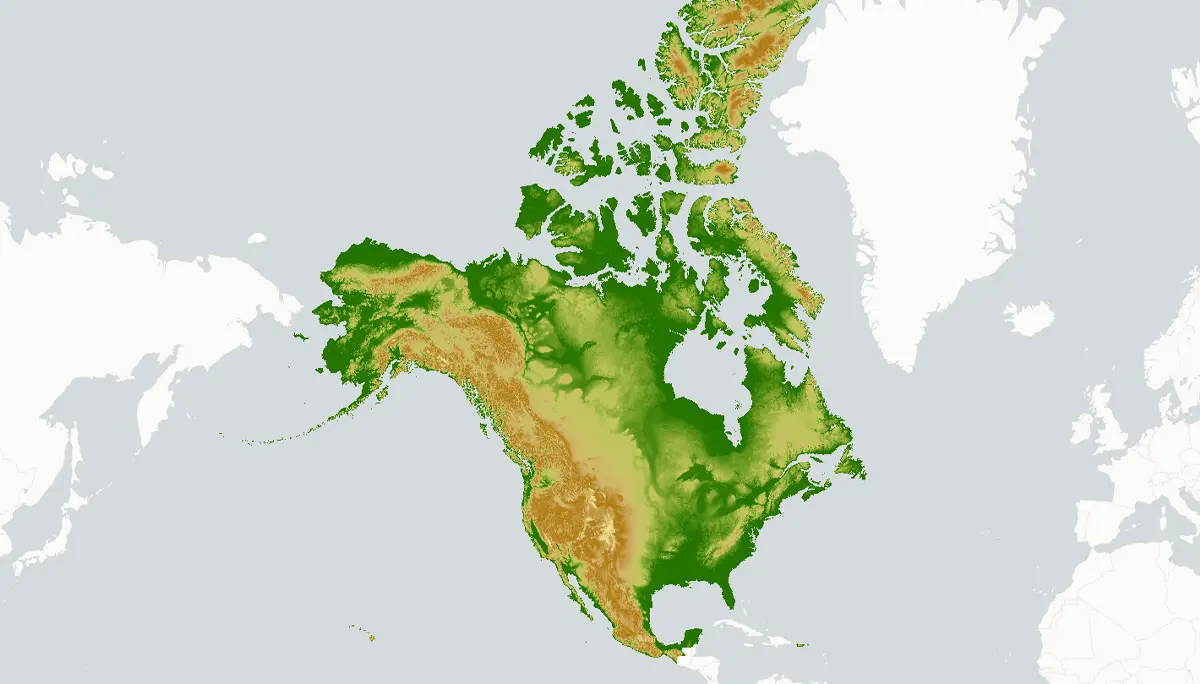
Map Viewer
The North American Environmental Atlas map viewer provides access to several data layers, including terrestrial and marine ecosystems as well as human influence.
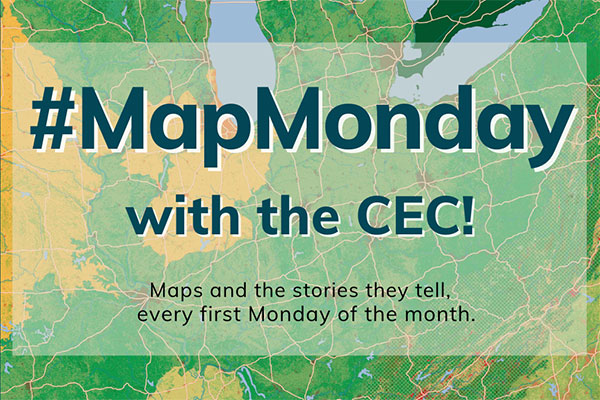
MapMonday
From tracking Uber orders in Montreal to understanding the effect of coastal farming activity in Sinaloa, Mexico– maps help us navigate and understand the world around us.
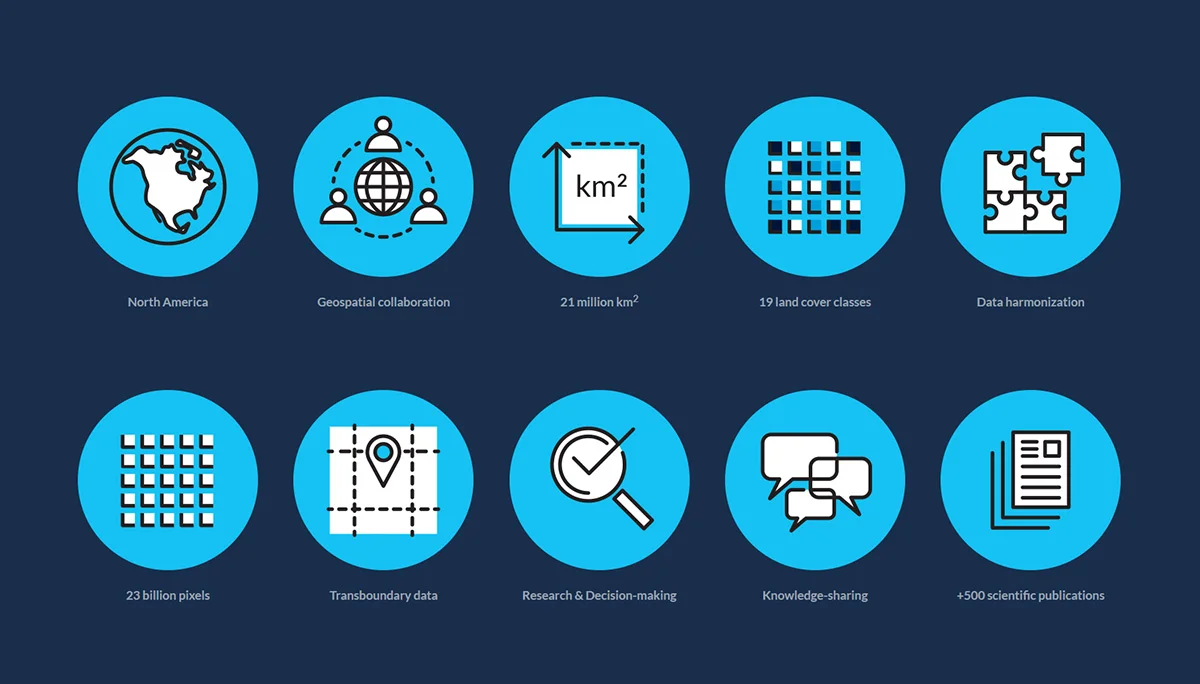
North American Land Change Monitoring System
A collaborative initiative between Canada, Mexico, and the United States to monitor land cover - the observed physical cover on the surface of the Earth - and its change over time.
Publications
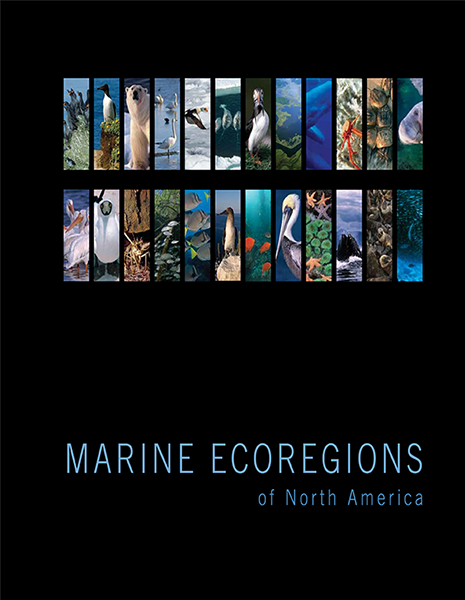
Marine Ecoregions of North America
A book that celebrates the richness and wealth of our region's common ocean and coastal...
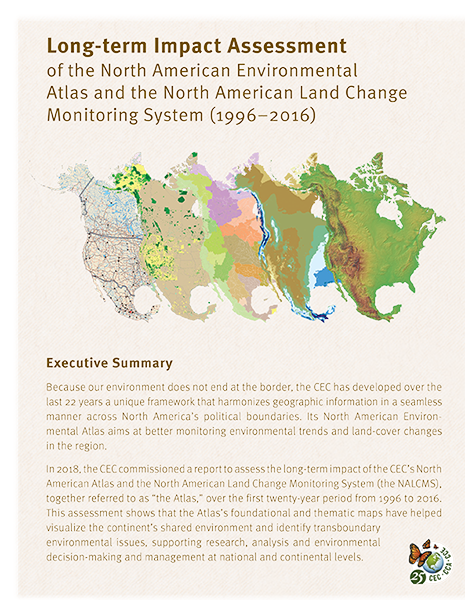
Because our environment does not end at the border, the CEC has developed over the last 22 years a unique framework...
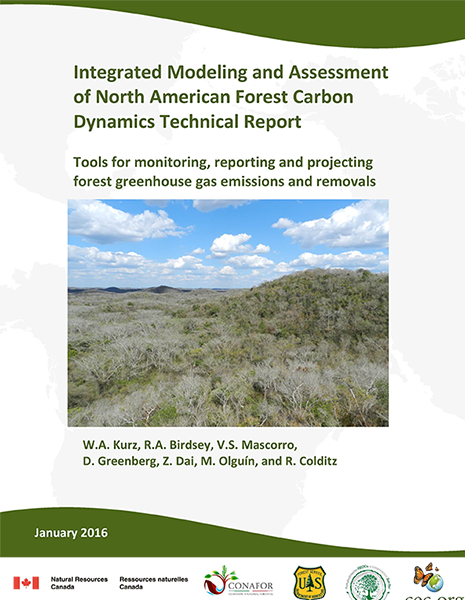
Integrated Modeling and Assessment of North American Forest Carbon Dynamics Technical Report
Tools for monitoring, reporting and projecting forest greenhouse gas emissions and removals
GIS Updates
Be the first to hear when we publish new GIS data and updates. We promise we won’t send you anything else.
Contact
Questions about the North American Environmental Atlas? Contact:
Dominique Croteau
Project Lead, Geospatial and Environmental Information
(514) 350-4307

